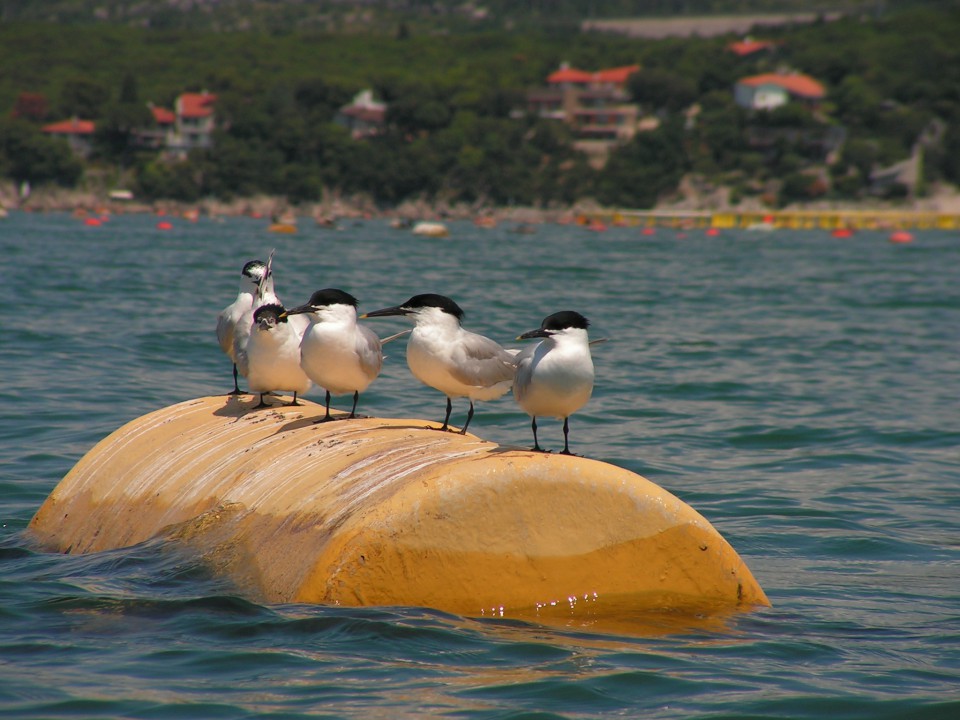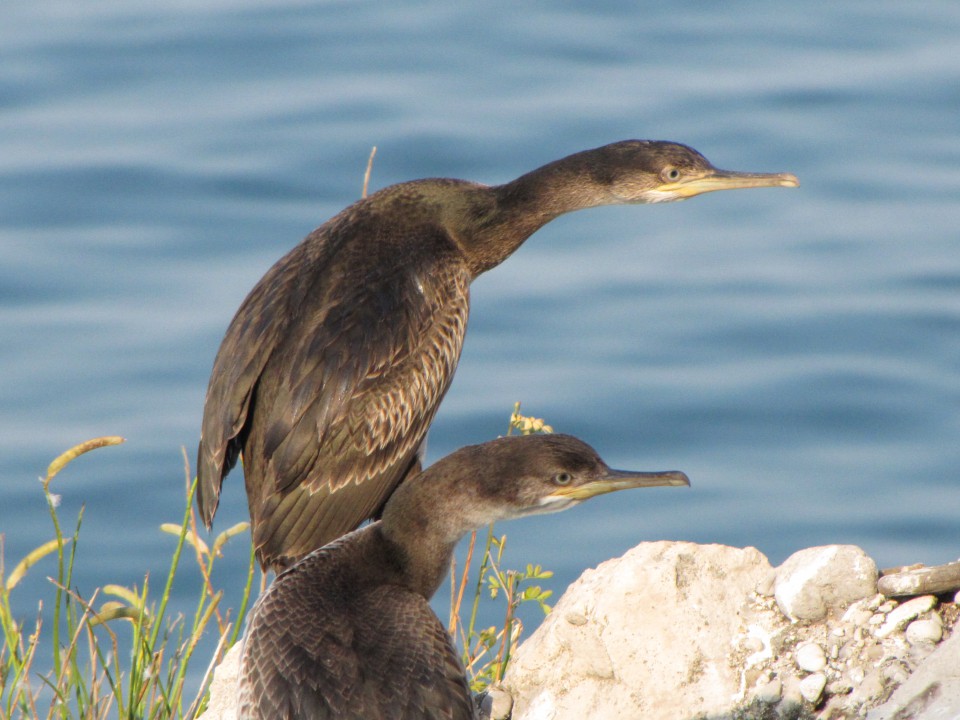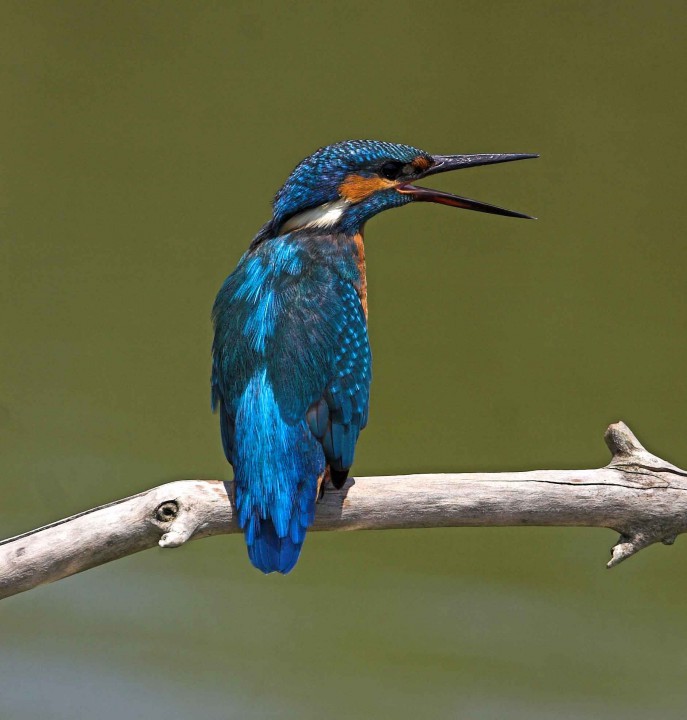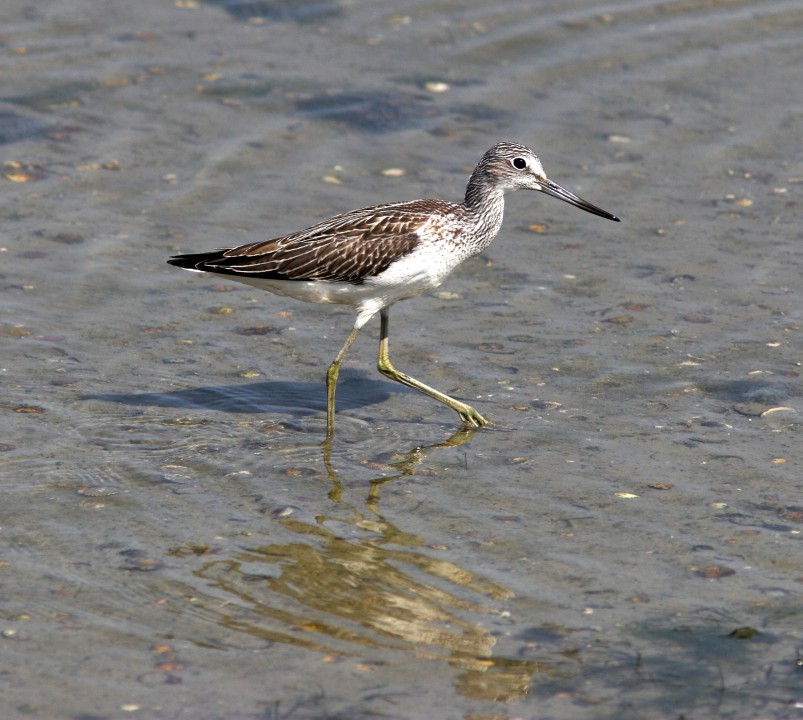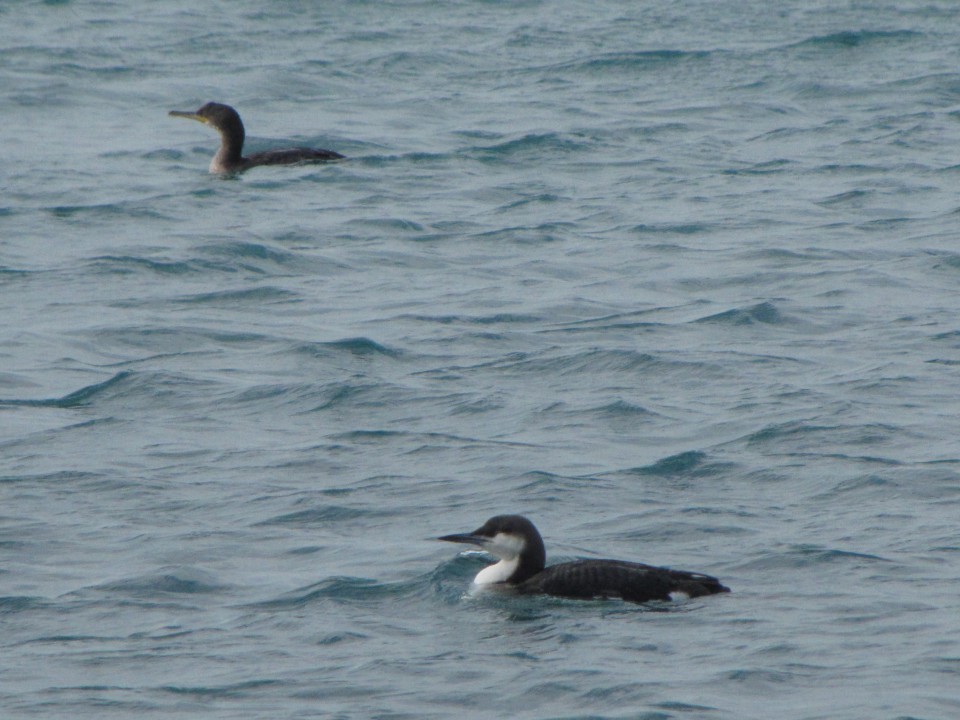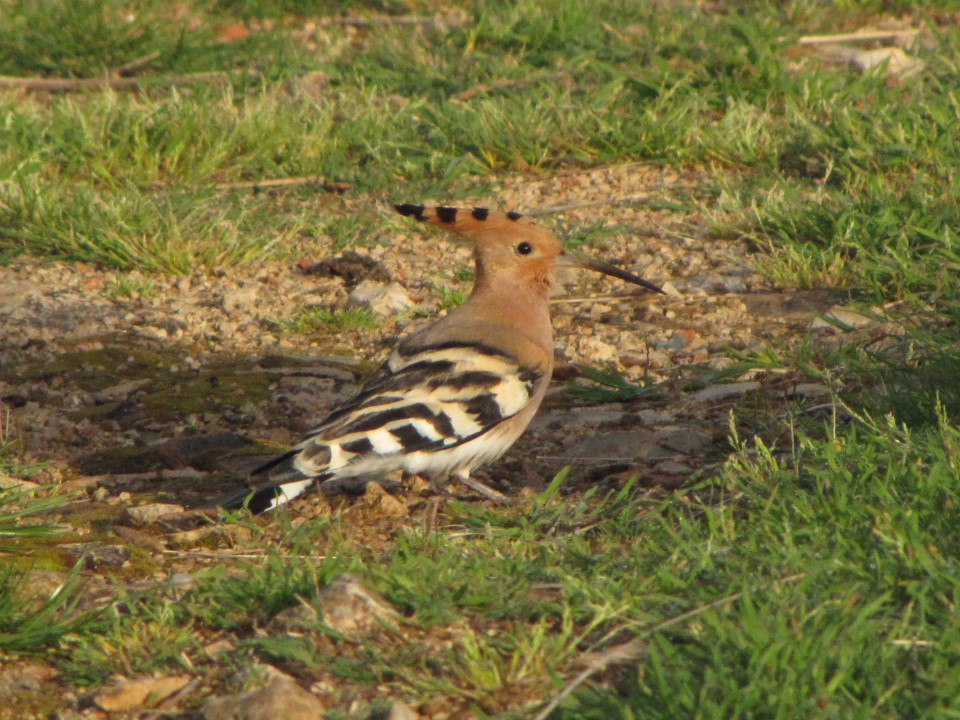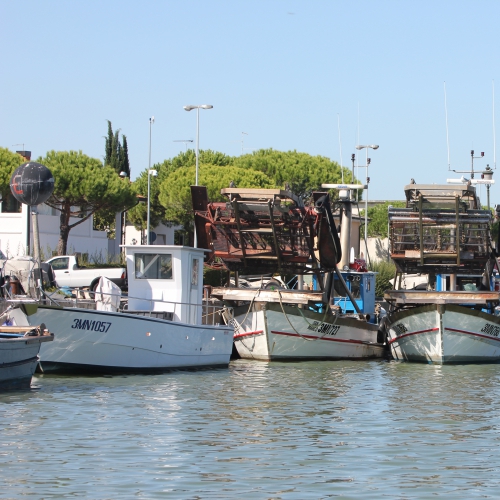
Descrizione
Tra porto S. Andrea e porto Buso si estende la lunga isola di S. Andrea costituita da un cordone sabbioso con modeste dune e dalle barene retrostanti. All’estremità occidentale è presente una cassa di colmata solamente in parte riempita da un ampio specchio d’acqua salmastra, mentre a oriente sono presenti piccole valli da pesca e zone agricole. Tutta l’Isola è costituita in Azienda Faunistico Venatoria e vige il divieto di accesso con l’eccezione dell’arenile. Attualmente molto interessante è la zona nei pressi del molo guardiano di Porto Buso. Qui il forte accumulo di sabbia ha favorito la formazione di ambienti diversificati dalla spiaggia, alle barene e a specchi d’acqua raramente comunicanti con il mare.
Ambienti
Le zone normalmente emerse della laguna sono denominate “barene” e sono caratterizzate dalla vegetazione alofila cioè tipica...
Costituiscono la separazione naturale tra laguna e mare. A differenza delle barene, limose, i cordoni litoranei sono sabbiosi e costituiti da dune...
La linea di costa che un tempo (fino agli anni Venti) si modificava naturalmente a seconda dell’innalzamento ed abbassamento del livello del...
Una delle più estese e vitali praterie sommerse del Golfo è quella antistante le foci dell’Isonzo. Si tratta di piante con...
Uccelli
cm 85-100, sessi simili. Piumaggio bianco, becco giallo che diviene nero in periodo riproduttivo. Presente tutto l’anno, non nidifica. Numeroso...
cm 84-102, sessi simili. Presente tutto l’anno nidifica in colonia in boschetti lagunari e altre zone boscate dell’entroterra. La nidificazione...
cm 45-55, spiccato dimorfismo, il maschio è grigio con le punte delle ali nere, la femmina è bruna, entrambi hanno il groppone bianco. Presente...
cm 39-44, sessi simili, Bianca e nera con becco rosso-arancio e zampe rossastre. Presente tutto l’anno, durante lo svernamento, fenomeno recente,...
cm 23-28, sessi simili. Molto mimetico con un piumaggio bruno striato, ha un lungo becco diritto ed un volo caratteristico a zig-zag. Presente da...
cm 10-11, sessi simili. Piumaggio giallastro striato di scuro. Caratteristico canto : zip-zip-zip emesso in volo. Frequenta zone costiere ad alte...
cm 37-43, sessi simili, grigio chiaro superiormente, bianco nelle parti inferiori, con calottina nera con ciuffo sulla nuca e becco nero con apice...
cm 48-57, sessi simili. Brunastro con lungo becco ricurvo. Presente tutto l’anno ma non nidifica. Forma aggregazioni durante l’alta marea su...
cm 37-45, sessi simili. Brunastro con becco ricurvo, più corto del chiurlo maggiore, presenta caratteristiche strie scure sulla testa. Presente...
cm 140-160, colore bianco, grigio nei giovani, tubercolo alla base del becco, più evidente nel maschio. Presente tutto l’anno, numeroso presso...
cm 10-11.5, sessi simili. Piccola cincia con caratteristica chiazza bianca sulla nuca. Presente tutto l’anno è legata per la nidificazione alle...
cm 51-62, anatra elegante con collo lungo e, nel maschio lunghe timoniere centrali. Specie svernante, frequenta le piane di marea, i ripristini...
cm 38-43 sessi simili, grigio con fasce alari bianche. Presente tutto l’anno nidifica comunemente nei boschetti delle isole lagunari e delle zone...
cm 77-94, sessi simili. Come pellicani e sule ha le 4 dita congiunte dalla membrana natatoria. Specie presente tutto l’anno, aumenta notevolmente...
cm 17-19,5, sessi simili. E’il corriere di dimensioni maggiori. Ricorda il corriere piccolo ma più massiccio con tratti più marcati e barra alare...
cm 15-16, maschio con capo grigio e gola bianca nella sottospecie cinerocapilla , ventre giallo, coda lunga con timoniere esterne bianche. Durante le...
cm 43-55, spiccato dimorfismo, il maschio è più colorato mentre la femmina è tutta scura con testa e spalle giallo paglierino. Presente tutto...
cm 42-50, il maschio presenta una caratteristica macchia bianca sulle copritrici dell’ala. Specie svernante molto numerosa da settembre a marzo,...
cm 15-17, il maschio ha la nuca rossastra e strie nere evidenti sul capo e ai lati del petto. La femmina ha lo stesso disegno ma in grigio. Presente...
cm 35-39, sessi simili. A febbraio veste il cappuccio bruno scuro dell’abito nuziale che poi perde in luglio-agosto. Presente tutto l’anno...
cm 37-40, sessi simili. Rispetto al gabbiano comune ha il becco più massiccio e rosso corallo, la testa nera-durante la nidificazione- e le punte...
cm 52-58, sessi simili. Grigio superiormente, bianco inferiormente. Presente tutto l’anno e nidificante abbondante in laguna, sui tetti di Trieste...
cm 55-65, sessi simili. Piumaggio bianco con lunghe penne, dette egrette. su nuca e dorso durante il periodi riproduttivo. Presente tutto l’anno...
cm 40-46, essi simili. Ricorda un gabbiano reale di minori dimensioni. Presente da novembre ad aprile, numerosa in alcuni inverni, Frequenta il mare,...
cm 50-60. spiccato dimorfismo, è il progenitore dell’anatra domestica. Presente tutto l’anno, molto adattabile, frequenta sia le zone umide che...
cm 68-78, sessi simili. Il breve ciuffo è presente negli adulti in inverno e inizio primavera. Presente tutto l’anno diviene raro in inverno e...
cm 45-55, sessi simili Presente tutto l’anno nidifica in colonie, associato a varie specie di aironi. in alcuni boschetti lagunari. La...
cm 17-19, sessi simili. Azzurro superiormente, rosso inferiormente con grande becco scuro e coda molto corta che in volo lo fanno sembrare un...
cm 30-34, sessi simili. Grigia superiormente, biancastra inferiormente, becco relativamente grosso leggermente rivolto all’insù. Presente tutto...
cm 24-27, sessi simili. Grigio-bruna superiormente, più chiara inferiormente con evidente barra bianca sull’ala, più scura in abito nuziale;...
cm 17-21, sessi simili. Caratteristico ventre nero e parti superiori rossastre, grigiastro d’inverno. E’ il “limicolo” più numeroso durante...
cm 18-31, sessi simili. Grigio chiaro superiormente e bianco inferiormente, becco più corto dell’affine pancianera. Presente da agosto a maggio,...
cm 18-20,5 bruno chiaro superiormente. bianco sulle parti inferiori. Le ali hanno una sottile barra chiara e vengono spesso bloccate brevemente nel...
cm 26-29, sessi simili. Piumaggio grigio, bianco e nero sulle parti inferiori durante il periodo riproduttivo. Grigia d’inverno con...
cm 48-56, sessi simili, piumaggio molto variabile, in genere bruna con chiazze chiare. Presente tutto l’anno, più numerosa anche in laguna durante...
cm 40-48, il maschio ha la testa nera con una caratteristica macchia bianca sulle guance. Presente durante lo svernamento e le migrazioni, frequenta...
cm 17-21, sessi simili. Nera superiormente, gola rossa e ventre biancastra. Presente da marzo-aprile e settembre-ottobre, Nidifica sotto manufatti...
cm 52-58, maschio con testa verde scuro e collarino bianco, femmina con testa rossastra. Presente durante lo svernamento è frequente durante la...
cm 34-37, sessi simili. Grigia chiara superiormente bianca nelle parti inferiori, con calottina nera e becco rosso. È la classica rondine di mare...
cm 63-75, sessi simili. D’inverno il piumaggio è grigio scuro superiormente, biancastro inferiormente Il becco è più massiccio e tenuto...
cm 55-67, sessi simili. Durante l’inverno ha un piumaggio grigio, biancastro inferiormente. Presente d’inverno in mare e nelle zone più profonde...
cm 24-28, sessi simili. Molto mimetico ricorda un tappeto di foglie morte. Di abitudini crepuscolari e notturne si osserva in volo mentre caccia...
cm 46-51, sessi simili Grigio superiormente, biancastro inferiormente, nell’abito nuziale mostra evidenti ciuffi sul capo e guance. Presente tutto...
cm 28-34, sessi simili. Grigio e biancastro d’inverno, veste il collo nero ed un ciuffo giallo dietro l’occhio rosso a marzo. Presente da agosto...
cm 29-33, sessi simili. Piumaggio beige chiaro con collarino nero. Presente tutto l’anno, spesso associata agli insediamenti umani in città,...
cm 25-29, sessi simili, piumaggio arancio barrato di nero, cresta erettile sul capo, volo sfarfallante. Presente da aprile a settembre ed è...
cm 15-16.5, sessi simili. Bruno rossastro superiormente più chiaro nelle pari inferiori. Presente da aprile a settembre. Nidifica in boschetti...
cm 13.14, sessi simili. Piumaggio bruno rossastro, Canto forte e scoppiettante che risuona spesso al nostro arrivo nel territorio di un maschio....
cm 55-65, aspetto bianco e scuro, becco rosso con tubercolo nel maschio. Presente tutto l’anno, frequenta le zone soggette a marea e le valli da...











